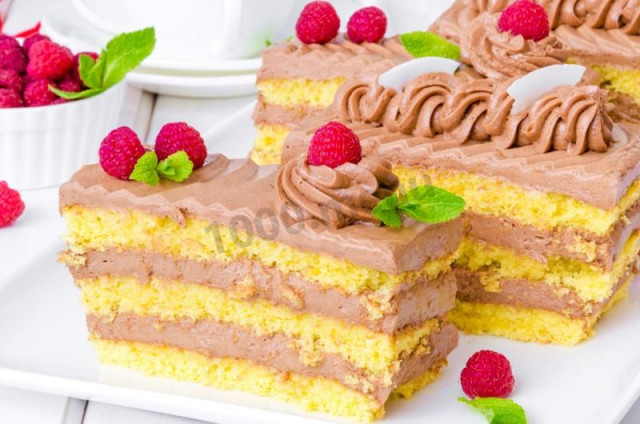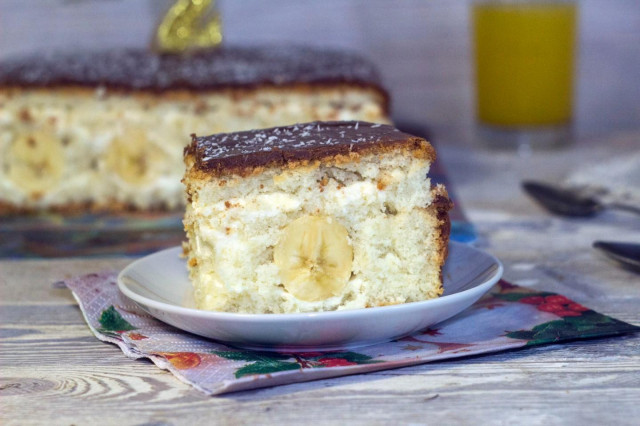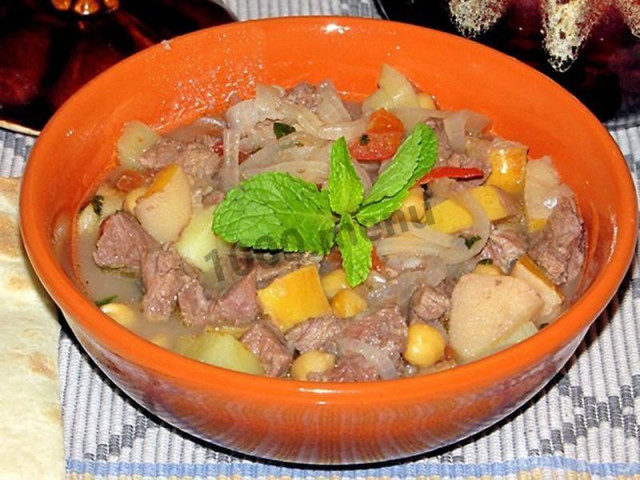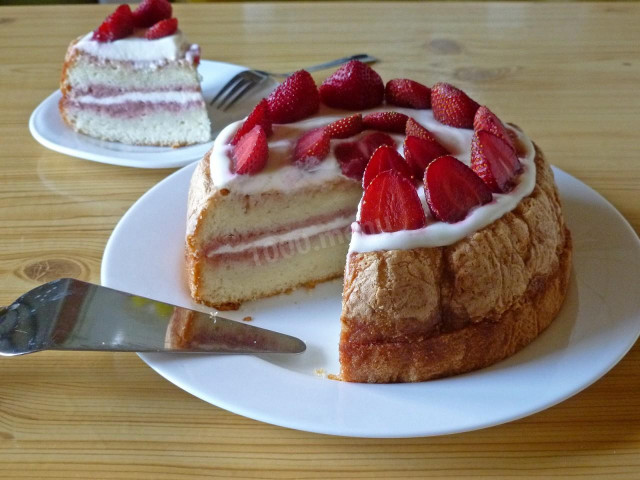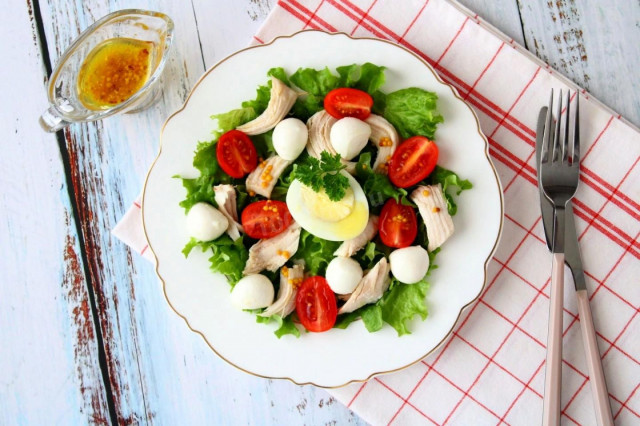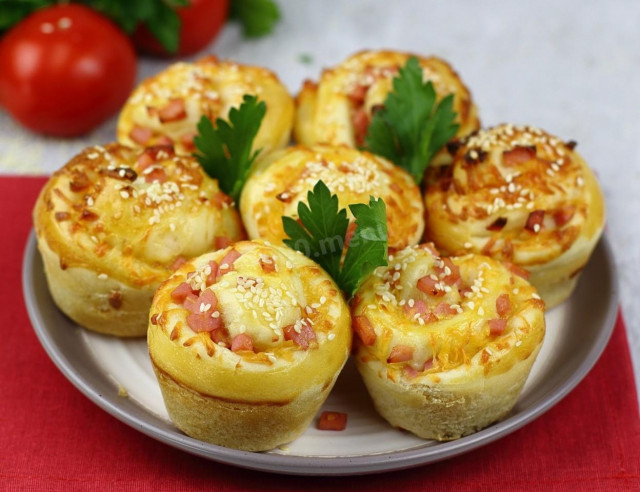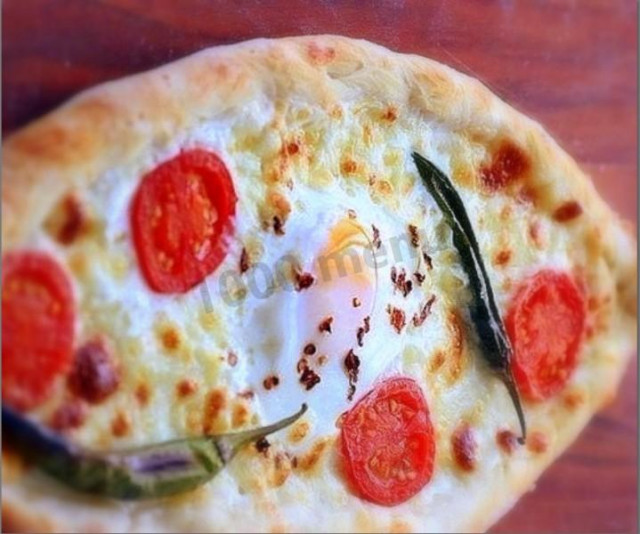Composition / ingredients
Step-by-step cooking
Step 1:
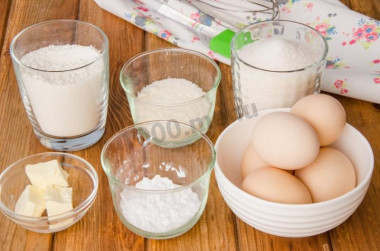
Prepare a sponge cake.
Step 2:
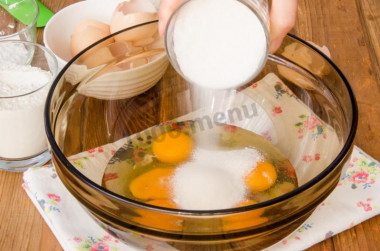
We break the eggs into a bowl and add regular sugar and vanilla to them (I have a vanilla pod in a container with sugar, so I didn't add vanilla sugar separately).
Step 3:
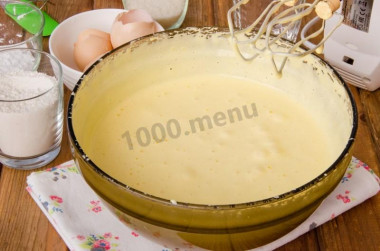
Beat eggs with sugar for 10 minutes until a very fluffy and dense mass is obtained.
Step 4:
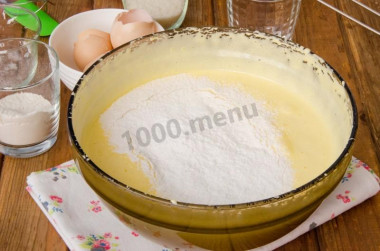
Mix flour with starch and sift together. In two steps, add this mixture to the egg mass.
Step 5:
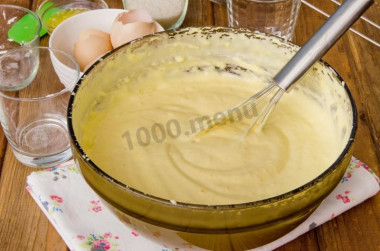
Gently mix dry ingredients with a whisk or a spatula. We act gently, but carefully, flour lumps should not remain in the mixture.
Step 6:
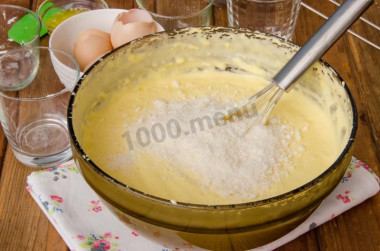
Add coconut shavings (I pre-ground it slightly in a coffee grinder) and also gently mix it in.
Step 7:
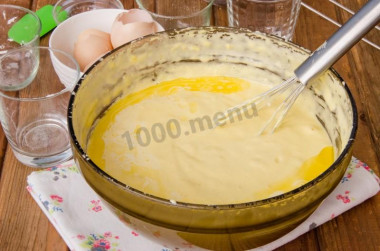
Melt the butter and pour it along the wall of the bowl into the dough.
Step 8:
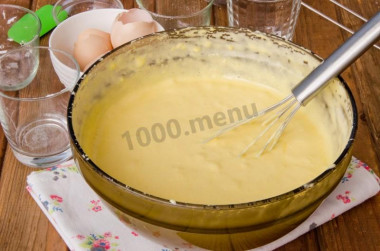
Stir the dough until smooth and smooth.
Step 9:
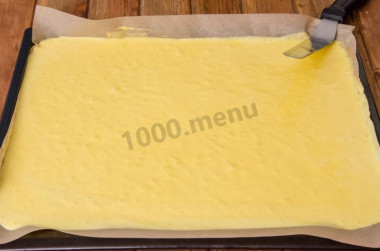
Cover the baking sheet with baking paper and pour the dough on it. With a spatula, we level the dough over the entire surface of the baking sheet.
Step 10:
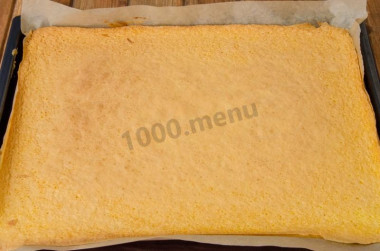
Bake the sponge cake at 180 C for about 12-15 minutes. Readiness is checked by pressing or skewering. Let the biscuit cool down.
Step 11:
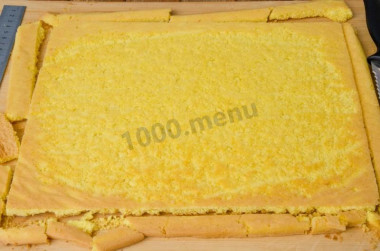
We separate the paper from the biscuit and cut the dry edges.
Step 12:
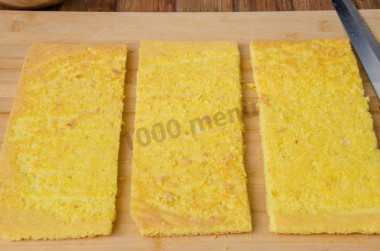
The biscuit itself is divided into 3 equal parts.
Step 13:
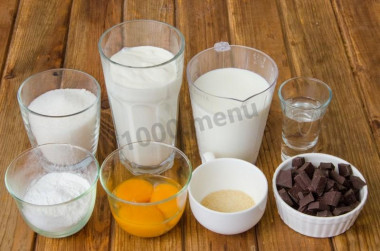
Prepare the cream.
Step 14:
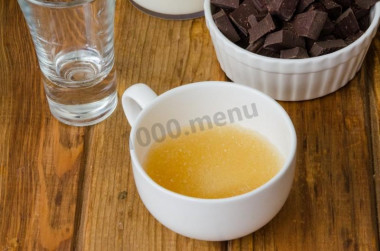
Gelatin is filled with water and left to swell.
Step 15:
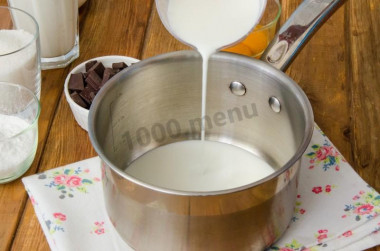
Meanwhile, prepare the custard part of the cream. Pour milk into a saucepan, put on fire and bring to a boil.
Step 16:
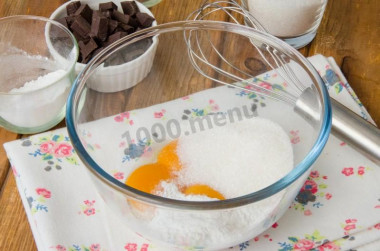
In a bowl, combine the egg yolks, sugar, starch and vanilla (in this case, I did not add vanilla again, since all the sugar I have is slightly flavored with a pod).
Step 17:
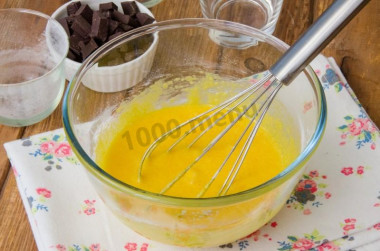
With a whisk, rub the yolks until smooth.
Step 18:
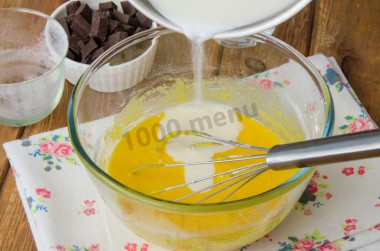
When the milk is heated, gently pour it into the yolk mixture in a thin stream, while thoroughly mixing the mass with a whisk.
Step 19:
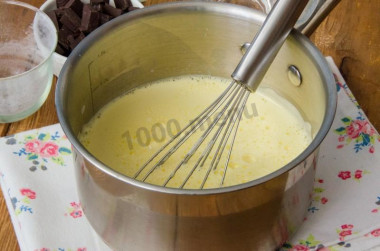
Pour the resulting mass back into the saucepan and put it on the fire.
Step 20:
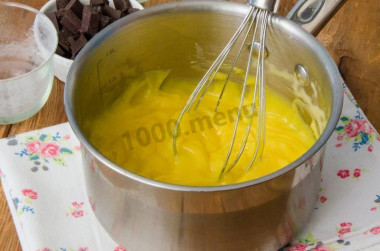
Over medium heat, stirring constantly, cook the cream until thickened. The cream is cooked fast enough, so do not be distracted, otherwise it may stick to the bottom.
Step 21:
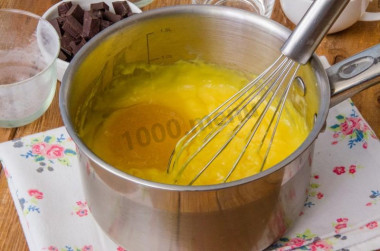
Remove the finished custard from the heat and while it is still hot add the swollen gelatin. Stir thoroughly so that the gelatin spreads in the mass.
Step 22:
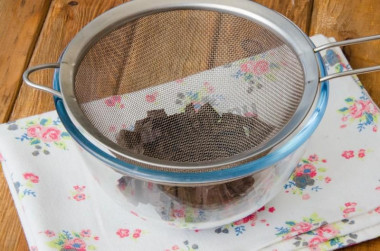
Break the dark chocolate into small pieces and put it in a large bowl, place a sieve on top.
Step 23:
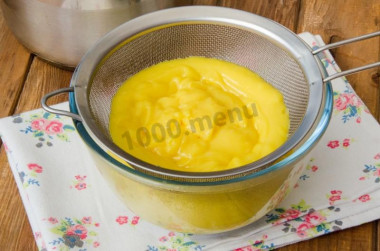
Pour hot cream on a sieve and wipe it.
Step 24:
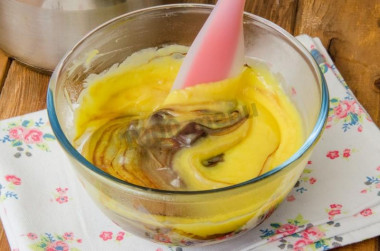
Leave the cream with chocolate for a few minutes so that the chocolate warms up well.
Step 25:
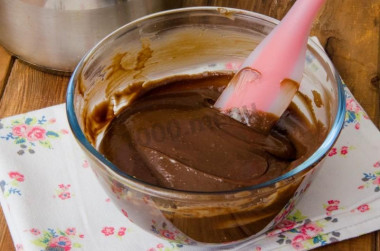
After that, mix the cream thoroughly until the chocolate completely melts. By the way, at this stage I advise you to try the cream and decide whether there is enough sugar or not, since depending on the bitterness of the chocolate, more sugar may be required. If suddenly the cream turned out not very sweet, then when you whip the cream, add a couple of tablespoons of powdered sugar to them. The resulting cream is allowed to cool to room temperature.
Step 26:
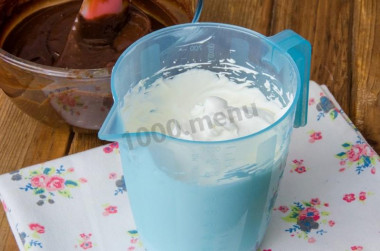
Pour the heavy cream into a high whipping container and whisk until a thick cream is obtained.
Step 27:
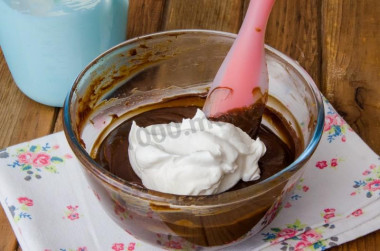
In the cooled chocolate part, gently mix the whipped cream.
Step 28:
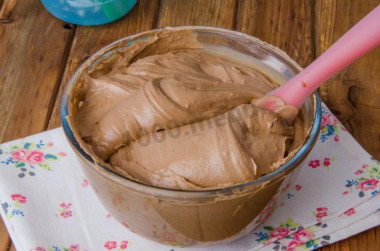
We get a very light chocolate cream mousse. Before use, we send it to the refrigerator.
Step 29:
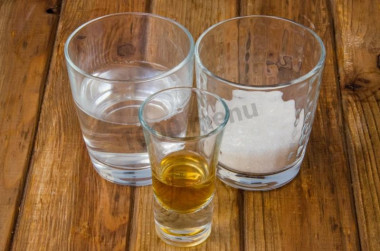
We will also prepare syrup for impregnation.
Step 30:
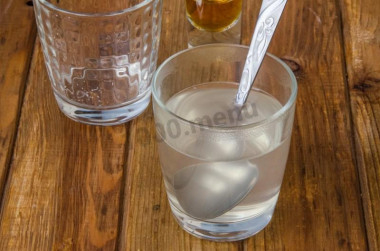
Combine the water (I take boiling water) with sugar and stir until the sugar is completely dissolved. Let it cool down.
Step 31:
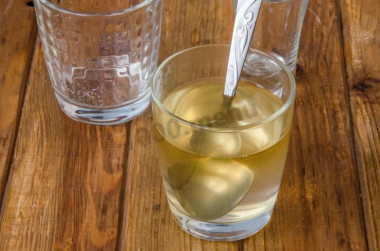
Add brandy to the cooled syrup, if desired. The syrup is ready.
Step 32:
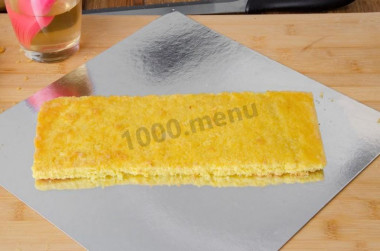
Let's start the assembly. We spread one part of the biscuit on the work surface and thoroughly impregnate it with the prepared syrup.
Step 33:
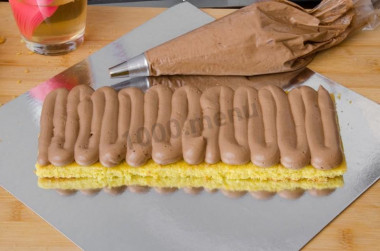
We transfer the finished cream into a pastry bag with a wide round nozzle and use it to apply a layer of cream to the biscuit.
Step 34:
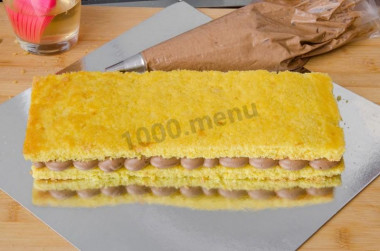
Cover the cream on top with the second part of the biscuit, also thoroughly impregnate it and apply a layer of cream.
Step 35:
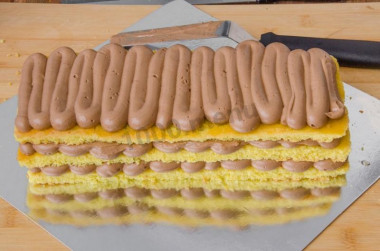
We also apply a layer of cream to the top.
Step 36:
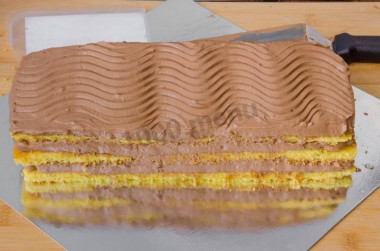
The cream is leveled and, if desired, using a curly spatula, we apply a pattern. In this form, we send the cake to the refrigerator for a couple of hours.
Step 37:
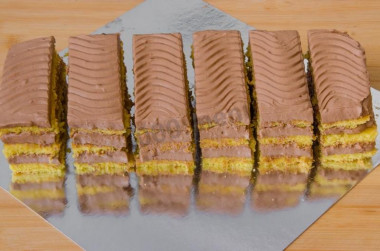
After the right time, we cut our cake into cakes.
Step 38:
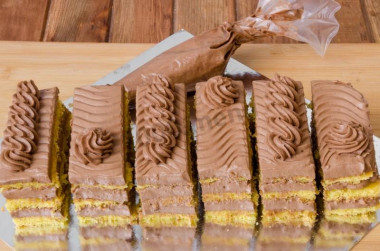
Each cake, if desired, is additionally decorated with cream remnants.
Step 39:
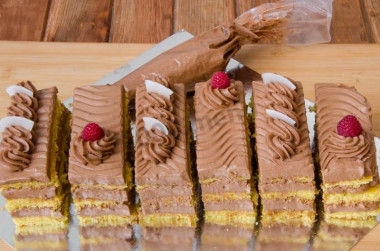
I also decorated the cakes with fresh raspberries and coconut plates.
Step 40:
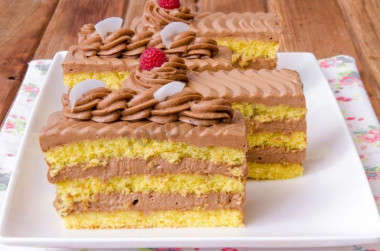
That's it. Cakes are ready!
Step 41:
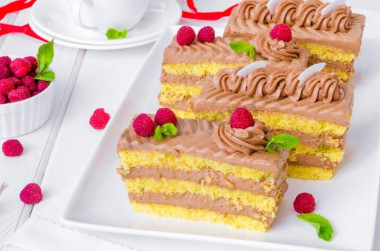
Can be served!
Step 42:
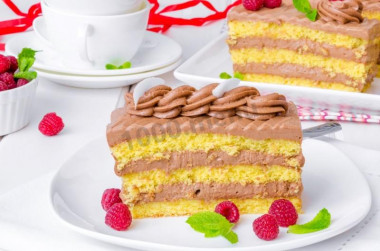
Bon appetit!
Calorie content of the products possible in the composition of the dish
- Whole cow's milk - 68 kcal/100g
- Milk 3.5% fat content - 64 kcal/100g
- Milk 3.2% fat content - 60 kcal/100g
- Milk 1.5% fat content - 47 kcal/100g
- Concentrated milk 7.5% fat content - 140 kcal/100g
- Milk 2.5% fat content - 54 kcal/100g
- Chicken egg - 157 kcal/100g
- Egg white - 45 kcal/100g
- Egg powder - 542 kcal/100g
- Egg yolk - 352 kcal/100g
- Ostrich egg - 118 kcal/100g
- Whole durum wheat flour fortified - 333 kcal/100g
- Whole durum wheat flour, universal - 364 kcal/100g
- Flour krupchatka - 348 kcal/100g
- Flour - 325 kcal/100g
- Granulated sugar - 398 kcal/100g
- Sugar - 398 kcal/100g
- Butter 82% - 734 kcal/100g
- Amateur unsalted butter - 709 kcal/100g
- Unsalted peasant butter - 661 kcal/100g
- Peasant salted butter - 652 kcal/100g
- Melted butter - 869 kcal/100g
- Gelatin - 355 kcal/100g
- Ordinary cognac "three stars" - 239 kcal/100g
- Cognac - 239 kcal/100g
- Water - 0 kcal/100g
- Cream 35% - 337 kcal/100g
- Cream 40% - 362 kcal/100g
- Bitter chocolate - 539 kcal/100g
- Coconut chips - 592 kcal/100g
- Egg yolks - 352 kcal/100g
- Vanilla sugar - 379 kcal/100g
- Corn starch - 329 kcal/100g
- Potato starch - 300 kcal/100g

